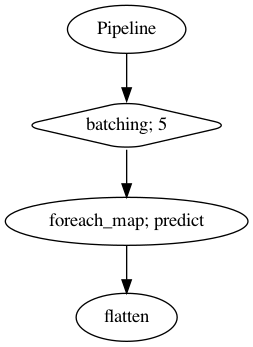Diarization timestamp
Contents
Diarization timestamp#
This tutorial is available as an IPython notebook at malaya-speech/example/diarization-timestamp.
This module is language independent, so it save to use on different languages. Pretrained models trained on multilanguages.
This is an application of malaya-speech Pipeline, read more about malaya-speech Pipeline at malaya-speech/example/pipeline.
[1]:
from malaya_speech import Pipeline
import malaya_speech
import numpy as np
import matplotlib.pyplot as plt
load Speaker Vector#
So to know speakers similarity, we can use speaker vector, just load using malaya_speech.speaker_vector.deep_model. Read more about malaya-speech Speaker Vector at https://malaya-speech.readthedocs.io/en/latest/load-speaker-vector.html
We are going to compare conformer-base and vggvox-v2.
[2]:
model_conformer = malaya_speech.speaker_vector.deep_model('conformer-base')
model_vggvox2 = malaya_speech.speaker_vector.deep_model('vggvox-v2')
Load audio sample#
[3]:
y, sr = malaya_speech.load('speech/video/The-Singaporean-White-Boy.wav')
len(y), sr
[3]:
(1634237, 16000)
[4]:
# just going to take 60 seconds
y = y[:sr * 60]
This audio extracted from https://www.youtube.com/watch?v=HylaY5e1awo&t=2s
Load VAD#
We need to use VAD module to know which parts of the audio sample are speaker activities, read more about VAD at https://malaya-speech.readthedocs.io/en/latest/load-vad.html
[5]:
vad = malaya_speech.vad.deep_model(model = 'vggvox-v2')
[6]:
frames = list(malaya_speech.utils.generator.frames(y, 30, sr))
[7]:
p = Pipeline()
pipeline = (
p.batching(5)
.foreach_map(vad.predict)
.flatten()
)
p.visualize()
[7]:

[8]:
%%time
result = p(frames)
result.keys()
/Library/Frameworks/Python.framework/Versions/3.7/lib/python3.7/site-packages/librosa/core/spectrum.py:224: UserWarning: n_fft=512 is too small for input signal of length=480
n_fft, y.shape[-1]
CPU times: user 1min 2s, sys: 37.5 s, total: 1min 39s
Wall time: 21.2 s
[8]:
dict_keys(['batching', 'predict', 'flatten'])
[9]:
frames_vad = [(frame, result['flatten'][no]) for no, frame in enumerate(frames)]
grouped_vad = malaya_speech.utils.group.group_frames(frames_vad)
grouped_vad = malaya_speech.utils.group.group_frames_threshold(grouped_vad, threshold_to_stop = 0.3)
[10]:
malaya_speech.extra.visualization.visualize_vad(y, grouped_vad, sr, figsize = (15, 3))

Load Spectral Clustering#
[11]:
from spectralcluster import SpectralClusterer
clusterer = SpectralClusterer(
min_clusters=3,
max_clusters=100,
)
[13]:
result_diarization_sc_conformer = malaya_speech.diarization.clustering(
vad_results = grouped_vad,
speaker_vector = model_conformer,
model = clusterer,
)
result_diarization_sc_conformer[:5]
[13]:
[(<malaya_speech.model.frame.Frame at 0x17e4255d0>, 'not a speaker'),
(<malaya_speech.model.frame.Frame at 0x17e4155d0>, 'not a speaker'),
(<malaya_speech.model.frame.Frame at 0x1780e8390>, 'speaker 0'),
(<malaya_speech.model.frame.Frame at 0x17e4321d0>, 'speaker 0'),
(<malaya_speech.model.frame.Frame at 0x17e415310>, 'speaker 0')]
[14]:
nrows = 2
fig, ax = plt.subplots(nrows = nrows, ncols = 1)
fig.set_figwidth(20)
fig.set_figheight(nrows * 3)
malaya_speech.extra.visualization.visualize_vad(y, grouped_vad, sr, ax = ax[0])
malaya_speech.extra.visualization.plot_classification(result_diarization_sc_conformer,
'diarization using spectral clustering', ax = ax[1],
x_text = 0.01)
fig.tight_layout()
plt.show()

How to get timestamp#
Group multiple frames based on label, this can achieve using
malaya_speech.group.group_frames.
[15]:
grouped = malaya_speech.group.group_frames(result_diarization_sc_conformer)
nrows = 2
fig, ax = plt.subplots(nrows = nrows, ncols = 1)
fig.set_figwidth(20)
fig.set_figheight(nrows * 3)
malaya_speech.extra.visualization.visualize_vad(y, grouped_vad, sr, ax = ax[0])
malaya_speech.extra.visualization.plot_classification(grouped,
'diarization using spectral clustering',
ax = ax[1],
x_text = 0.01, y_text = 0.5)
fig.tight_layout()
plt.show()

Inspect grouped variable.
[16]:
grouped[0]
[16]:
(<malaya_speech.model.frame.Frame at 0x1a6346850>, 'not a speaker')
malaya_speech.model.frame.Frame stores timestamp and duration attributes.
[17]:
grouped[0][0].timestamp, grouped[0][0].duration, grouped[0][1]
[17]:
(0.0, 10.95000000000002, 'not a speaker')
[18]:
grouped[1][0].timestamp, grouped[1][0].duration, grouped[1][1]
[18]:
(10.949999999999958, 5.400000000000001, 'speaker 0')
[ ]:
